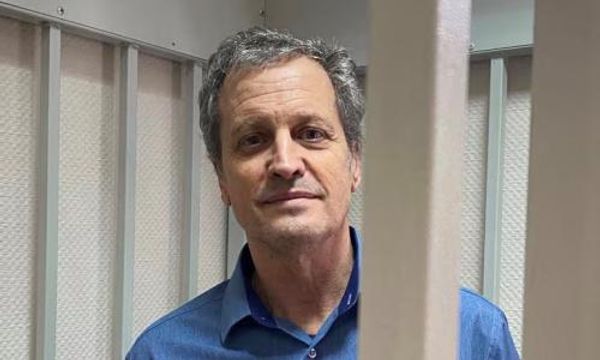
Picture life without traffic jams or petrol stations. Have your Smartphone automatically book your next doctor's checkup. Tootle off to work on an electric bike through manicured parkland.
Reserve one of the 1,000 homes in Japan's Fujisawa Sustainable Smart Town and such a low carbon, eco lifestyle is yours for the taking.
Sound like a futuristic, eco-version of Yuppie-ville? Perhaps. But this conversion of a disused factory site into a purpose-built, green city could well be a sign of things to come.
And not before time: by 2050, about eight in ten people will be living in cities, population experts predict. The implications of such rapid urbanisation are worrying environmentalists. The planet's future, many of them warn, could be won or lost on urban planners' drawing boards.
Authorities in the central Japanese city of Fujisawa are hoping their "smart town", due to open its gates in 2013, might provide a model for the way forward. With a total budget of 60bn yen (£463m), the pilot experiment is expected to cut average carbon dioxide emissions by 70%. With the first brick laid only last month, the ink on the blueprints has yet to be completely finalised. But the city's backers – a consortium of nine companies, led by electronics giant Panasonic – aren't short on ambition.
"Our aim is to build a smart town that will be the model for 'smart life' [that is being] called for worldwide," says Teruhisa Noro, a spokesperson for the project at Panasonic, which sees its involvement as part of Japan's rebuilding efforts after March's tsunami.
As a minimum, every house will have solar power generator units and home fuel cells. Energy storage devices and heat-pump hot-water systems will come as standard. The same with energy-saving air conditioners and sensor-controlled lighting.
Green energy systems lie at the heart of the leaf-shaped city, a structure intentionally designed to show the natural interconnectedness of its constituent parts.
One of the critical innovations underpinning the project is a smart grid, which will see every villa, apartment and condominium hooked up to same real-time information network, enabling the supply of electricity to be lined up with demand.
"Fujisawa will be a town with power and information networks that are connected from the start,," says Noro.
The statement holds an important clue as to the drivers behind the Smart Town idea. Saving the planet is part of it and Panasonic has set itself the target of becoming the world's greenest electronics company by its centenary in 2018. But sustainable cities promise to become big business too. By Panasonic's reckoning, global demand for new cities will hit 3,100 trillion by 2030.
The consortium bankrolling the Fujisawa project includes utilities, a consultancy firm, several banks, a real estate developer, an architect firm and a construction company. All see it as an opportunity to test out products and solutions that can then be spun out elsewhere.
Most of that demand will centre on Asia, where migration from the country into cities is set to explode. China alone is expecting its urban population to increase by 350 million over the next 10 years. The country has earmarked funds for at least a dozen new eco-cities as part of its five-year plan.
Panasonic is involved with a number of other projects, including the Sino-Singapore Tianjin Eco-City project in China and the Delhi-Mumbai Industrial Corridor in India.
"There's a convergent trend between companies and cities," says Bruno Berthon, managing director of sustainability services at global consultancy firm Accenture, one of the companies participating in the Fujisawa pilot.
Part of that convergence centres on shared environmental targets. Carbon emissions in Europe are going up in every city bar one (Stockholm). Innovative business solutions are seen as critical to turning that around.
Fujisawa's emphasis on healthcare also fits public policy objectives. The early plans promise technology link-ups with medical facilities and other ways to help older people live a comfortable life - important, given Japan's ageing population.
Competition represents another overlap of interests. If the20th century was all about the competitiveness of nations, Berthon says, then the 21st century will be about the competitiveness of cities.
Companies are looking to set up operations in urban environments with efficient transport links, low pollution and good housing options, he adds. "Industries are choosing not between countries, but between Frankfurt, Barcelona and Marseilles or Beijing and Shanghai."
This raises another important issue. The innovations being tested out at Fujisawa are designed not just with future greenfield cities in mind; existing urban conglomerations stand to gain much too. "In theory, it's easier to get these 'smart cities' right from the start. In Europe and elsewhere, the battle is to retrofit", says Paul Rainger, an expert on urban sustainability at Forum for the Future.
The ultimate aim of these huge "working labs" is to engineer ideas that will become standard for future urban infrastructure across the board, argues Rainger. "Companies are looking for the sustainability equivalents of the Sky dish or Edison light bulb."
He cites the example of San Francisco, where the municipal transportation department has introduced an open source database and invited companies to devise businessideas on the back of it. A Smartphone app to determine when your bus or tram will arrive is just one of the ideas to have emerged so far. Another app uses sensors in the city's car parks to direct drivers to empty parking spaces.
The big prize for companies focuses at the "macro level" ofrunning urban services, such as the power grid or water grid, argues Rainger. That requires an entirely different business model and skill set from current practices and will be less related to large scale power generation, for instance, and more about micro-managing energy networks.
This content is brought to you by Guardian Professional. Become a GSB member to get more stories like this direct to your inbox







